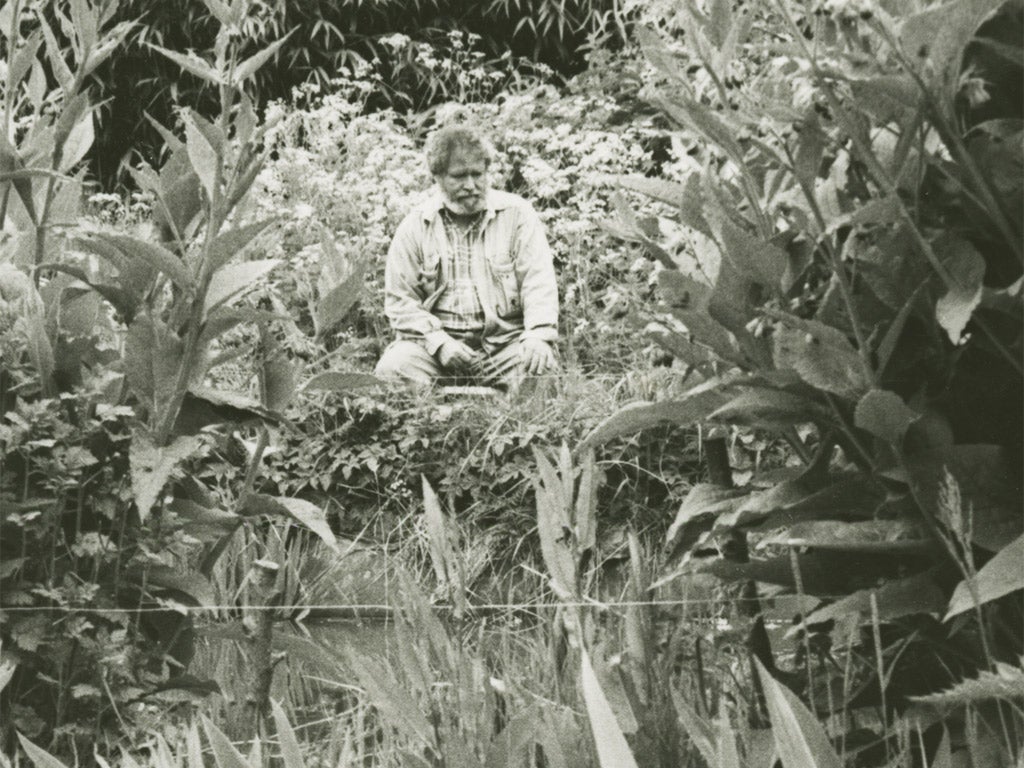John Norris Wood: Artist and teacher whose own work drew on his love of nature and who inspired generations of students
Norris Wood loved animals, and was prone to idiosyncratic whimsy, his likes and dislikes pronounced

In 1971 Robin Darwin, great-grandson to Charles and rector of the Royal College of Art, asked John Norris Wood to found the Natural History and Illustration and Ecological Studies course there. It was a first for any art school and was to Norris Wood a great privilege, reflecting the awe and passionate love he felt for the natural world and almost all living creatures; sentiments that he passed on to thousands of his students, many who have ended up as leading exponents in the field, together with an enhanced humane attitude to protecting both fauna and flora and conserving nature.
Norris Wood loved animals. A consultant to the BBC's Life on Earth series (1979), he went off David Attenborough on hearing him tell a journalist that he didn't necessarily love all creatures. He was prone to idiosyncratic whimsy, his likes and dislikes pronounced. In were Freddie Mercury, Quink ink and Louis Armstrong; Sinatra was simply, inexplicably, out. Churchill, Hardy (the poems especially) and Charles II were in.
Really in was Bing Crosby, with whom he had once engineered a meeting as a student in Paris. He collected boxes of Bing ephemera – enough to bequeath much to the official Crosby Appreciation Society. His crushes were childlike and charming, and he was fairly protective of them, penning beautiful letters in their defence. He might have made more of writing but he was impatient, so words flowed mostly into marvellous conversation or through his teaching.
He had a gift for friendship, and phenomenal loyalty. Beloved fellow artists and teachers at Goldsmiths' College were Adrian Ryan and Betty Swanwick who, like him, were advocates of the vanishing world of drawing only from the life. They were all disturbed by the contemporary swing in favour of what he described as "conceptual bowls of vomit." Where Ryan was careful about complaining, by receding to the pub, Swanwick showed her dissatisfaction openly: "What a fearful vulgar horrific heap of satanic shite the end-of-year degree show proved to be. I shudder and suppurate with misery when I remember it."
His specialisation meant that his insistence on drawing from the life was easier. In addition to his East Sussex garden, stocked with songbirds, bees, butterflies and moths, plus the adored fleets of reptiles, snakes and myriad tortoises, he kept a remarkable zoo on the top floor of the RCA building.
He was the only son of Wilfrid Burton Wood, a scholar-physician at the London Chest Hospital and a pioneer in asbestosis and childhood tuberculosis, from which his son coincidentally suffered. His mother, Lucy, was a lover of animals, while Joan Procter, Keeper of Reptiles at the London Zoo, was their neighbour. When she placed a python and boa constrictor into his pram, John let out a gurgle of pleasure. His father observed that a love for reptiles stemmed from these occasions and took him weekly to the zoo, where Miss Procter could be seen walking an unusually obedient Komodo Monitor lizard on its lead.
During the war, he spent his holidays in Essex, taking inspiration from the plethora of frogs, toads, great crested newts, dragonflies, bats, owls and yellowhammers which thrived there. He paid tribute to these and more in his illustrations ever after, deploring the "ruthless elimination of habitat on which wildlife, fauna and flora depend" by our own species "which may well be leading to oblivion for us all."
His work, delicate, pleasing and accessible, has been exhibited throughout the world. A set of stamps on British birds was designed in 1966 for the Royal Mail, while his natural history children's book series "Hide and Seek" sold around 2m copies.
In 1962, he married Julie Guyatt, with whom he had two children; Wilfrid, a sculptor, and Dinah, an editorial director for Faber. Julie's death from cancer in 2001 changed everything for him, residing by himself, his unorthodox approach to housekeeping somewhat imperilling his surface well-being. He continued to work – until retirement was forced upon him – to an extent in his attic, which was accessed via obstructed wooden stairs rather resemblant of a ladder leading to another world, littered with battalions of lead soldiers and model aeroplanes, where Louis Armstrong and Bing emphatically and noisily presided. It was quite near to Norris Wood's idea of bliss.
Recently on the RCA website, a student wrote of him: "It was an experience of total joy to be in the presence of [his] big, beardy face, erupting in uncontrolled laughter… We loved your stories and loved the way you loved your wife… sharing a huge pot of tea and a homemade cake in your garden at home with Julie." In his little blue cap, John could resemble a jovial Popeye, but was wittier.
His years of teaching caused wonderful letters to be sent by former students alerted to his illness, which he read in hospital with happiness. Modest in his successes, as all those with integrity who experience discordant changes in fashion, he nevertheless said to his daughter Dinah that his life had not been wasted. Not all artists are so fortunate.
John Norris Wood, artist and teacher: born London 29 November 1930; married 1962 Julie Guyatt (died 2001; one daughter, one son); died Pembury, Kent 17 October 2015.
Join our commenting forum
Join thought-provoking conversations, follow other Independent readers and see their replies
Comments
Bookmark popover
Removed from bookmarks